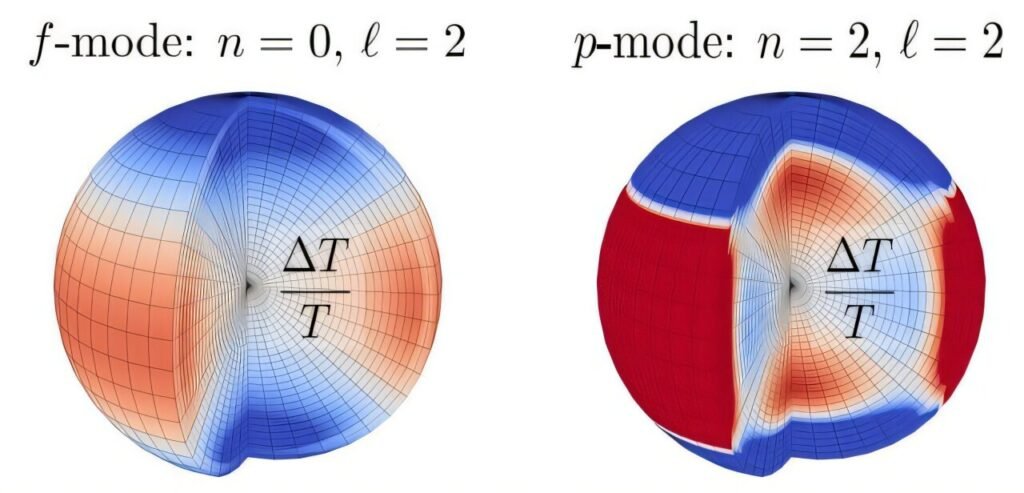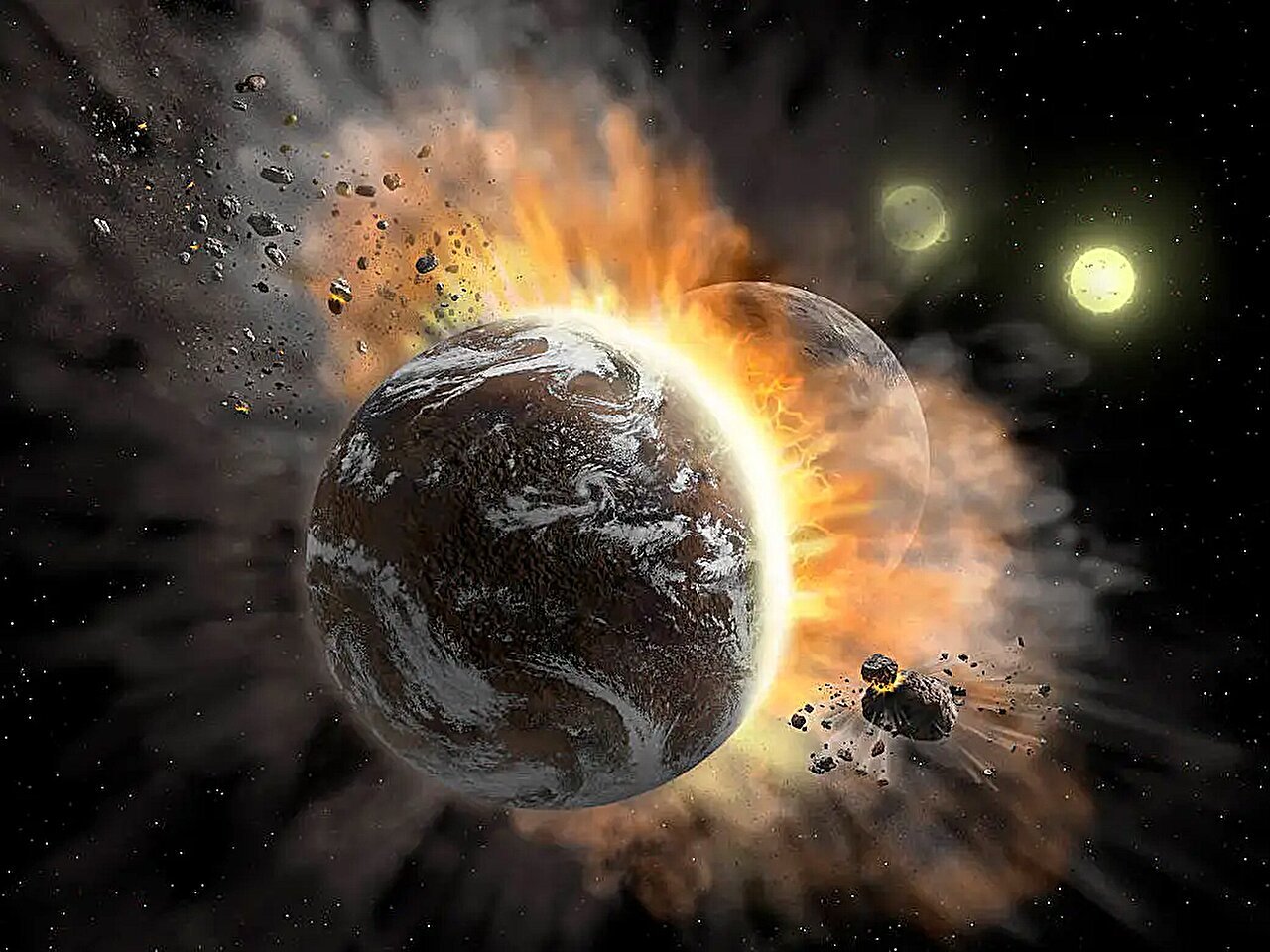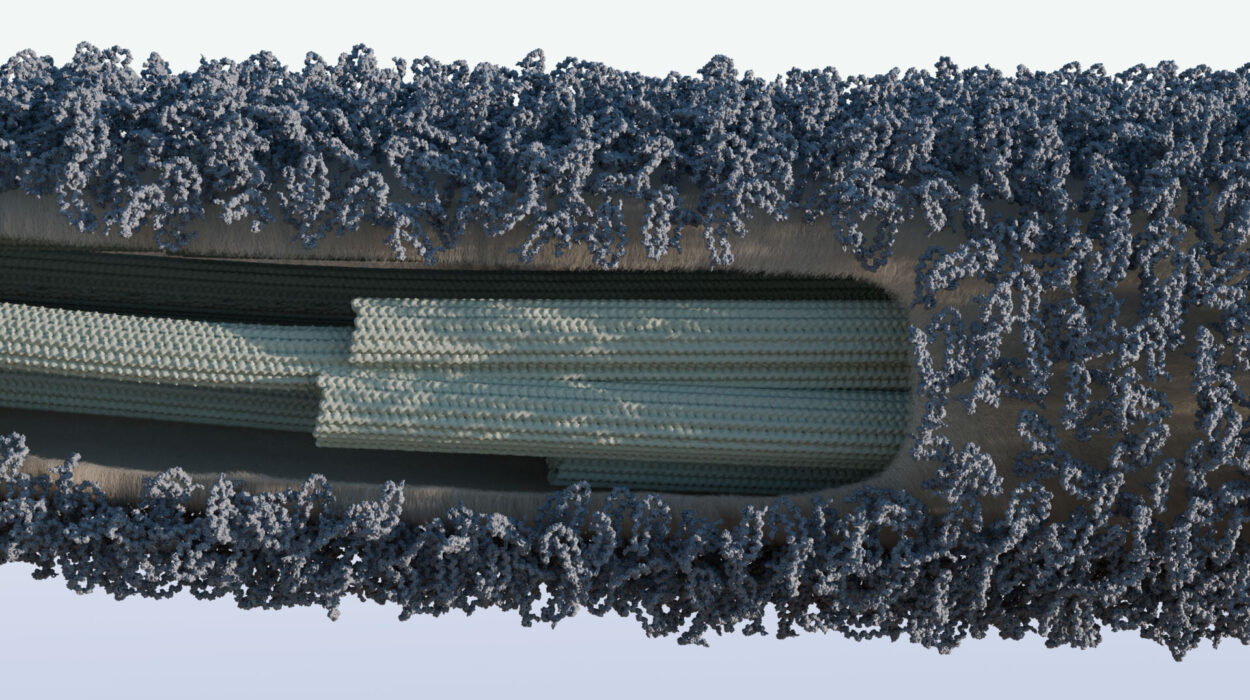To understand just how chaotic the early days of any solar system can be, we need look no further than our own Moon. Its crater-pocked face is a silent testament to a time when space was a battlefield. Rocks, ice, and metal hurtled through the void, smashing into planets and moons in spectacular, world-changing impacts. The early solar system was not a place of calm formation—it was a celestial demolition derby.
And what we see on the Moon was only the tip of the cosmic iceberg. The same violent story unfolded across the entire solar system and is still playing out today in young star systems throughout the galaxy. But what if we could hear those ancient cosmic collisions—not with our ears, but with our instruments? What if, through the ripples they left behind, we could see the echoes of planetary chaos?
A team of researchers has just taken us one step closer to doing exactly that.
Simulating Cosmic Crashes
In a groundbreaking new study titled Seismic Oscillations Excited by Giant Impacts in Directly-Imaged Giant Planets, a team of astrophysicists led by J.J. Zanazzi of UC Berkeley set out to explore the invisible aftermath of epic planetary collisions. Their work delves deep into a cosmic mystery: can the seismic waves caused by planetary collisions be detected from Earth, not directly, but through the powerful instruments aboard the James Webb Space Telescope (JWST)?
The study, published on the arXiv preprint server, blends theoretical modeling with a touch of interstellar forensics. The researchers ran simulations of a dramatic cosmic event—a Neptune-mass planet (about 17 Earth masses) crashing into a much larger, older gas giant, a super-Jupiter known as Beta Pictoris b. The goal: to see if such an impact would trigger seismic waves strong and long-lived enough to be spotted across light-years of space.

Beta Pictoris b: A Planet Shaped by Violence
Beta Pictoris b is no ordinary planet. It’s a behemoth—13 times the mass of Jupiter—and it orbits a young star just 63 light-years from Earth. At an estimated age of only 12 to 20 million years, it’s a newborn by astronomical standards, and a favorite target of planetary scientists.
What makes Beta Pictoris b especially interesting is its high metal content. According to previous studies, its core may contain between 100 and 300 Earth masses of heavy elements. In astrophysics, “metals” refer to any elements heavier than helium, and Beta Pictoris b appears to have an abundance of them. This strongly hints that it didn’t form in isolation. Rather, it likely grew by consuming other planetary bodies—especially those with solid, metal-rich cores.
That theory dovetails perfectly with the new simulation. Zanazzi and his team suggest that the planet’s heavy metal content could be the remnants of catastrophic collisions—violent mergers between the cores of smaller worlds and the gas giant itself.
When Planets Collide: The Aftermath
So, what happens when a Neptune-sized planet plows into a gas giant like Beta Pictoris b? According to the researchers, the impact doesn’t just dump mass and metals into the larger planet. It also shakes it to its core—literally. The collision excites seismic oscillations, or waves, that ripple through the planet’s interior.
These waves aren’t short-lived. The team’s simulations show they can persist for millions of years, especially in young gas giants where the internal layers haven’t fully settled. Such long-lived waves act like a drumbeat echoing the chaos of creation.
And here’s the exciting part: while we can’t detect these waves directly, the JWST just might be able to spot their effects.
Listening with Light: JWST’s Photometric Power
The JWST is not a seismometer. But what it can do, with exquisite precision, is measure changes in light—down to minute fluctuations. These variations in light, or photometric changes, can be tied to structural oscillations within the planet. In other words, if seismic waves caused by a massive impact make the planet subtly pulsate, those pulsations might alter its brightness in detectable ways.
The simulations show that if the impact on Beta Pictoris b happened within the last 9 to 18 million years, the resulting oscillations would still be strong enough today for JWST to pick up on.
It’s like catching the fading hum of a tuning fork—only this one is a planet, and it was struck by another world.
Planetary Seismology: A New Window into Exoplanets
This idea—that we can learn about a planet’s inner structure from the outside by observing how it vibrates—is the core of planetary seismology. On Earth, we’ve long used earthquakes to understand the crust, mantle, and core. On distant worlds, especially gas giants, it’s much harder. Until now, seismology has been mostly a tool for studying stars or our own solar system’s planets, like Saturn.
But Zanazzi’s team proposes that infrared photometric monitoring could open a whole new frontier. By carefully watching how the light from distant exoplanets changes over time, we might be able to infer:
- Their internal density
- The presence of stable stratification layers
- The composition of their cores
- Their formation history
It’s a revolutionary idea—one that could transform how we study worlds we can’t physically reach.
The Bigger Picture: Cosmic Archaeology
This research doesn’t just offer a way to peer inside gas giants. It offers a glimpse into the violent adolescence of planetary systems. Collisions are not just catastrophic—they’re formative. Every scar, every shockwave, every seismic pulse tells a story.
By tuning into these planetary heartbeats, astronomers could uncover the hidden biographies of distant exoplanets. How many collisions did it take to form a super-Jupiter? How did those impacts alter its atmosphere, its orbit, its core?
And more intriguingly: how common are these kinds of impacts across the galaxy?
Beyond Impacts: Other Ways Planets Sing
While giant collisions are one source of seismic waves, the researchers point out another fascinating possibility: tidal excitation. In systems with hot Jupiters—massive gas giants that orbit extremely close to their stars—gravitational forces can distort and flex the planet repeatedly, exciting fundamental (f-) modes that could also be detected in light curves.
These tidally excited oscillations can create rhythmic, planet-wide waves that persist for as long as the gravitational dance continues. The same technique proposed to study collision-induced waves could also be applied to these tidally excited worlds.
In essence, whether through violent collisions or gravitational love affairs, planets have stories to tell. We just need to listen in the right way.
Charting the Future of Exoplanet Exploration
This research opens up an entirely new observational technique—one that could work hand-in-hand with traditional methods like:
- Transit photometry, which tracks how a planet dims its star when it passes in front of it
- Radial velocity, which detects the gravitational wobble of a star caused by orbiting planets
- Direct imaging, which takes actual pictures of distant exoplanets
Now, vibrational photometry could become a fourth pillar, allowing scientists to probe planetary interiors, not just surfaces or orbits.
In a universe teeming with worlds, this gives us a powerful new lens.
Final Thoughts: The Universe Trembles with Memory
In the quiet darkness of space, planets tremble—not from fear or weather, but from memory. Memory of impact. Memory of violence. Memory of creation.
The seismic waves that ripple through gas giants like Beta Pictoris b are the aftershocks of ancient collisions, preserved in planetary flesh. With the right tools, we can see those ripples. We can decode their message. We can read the hidden past of distant worlds.
And in doing so, we realize something profound: the universe never forgets. It simply waits for us to learn how to listen.
Reference: J. J. Zanazzi et al, Seismic Oscillations Excited by Giant Impacts in Directly-Imaged Giant Planets, arXiv (2025). DOI: 10.48550/arxiv.2505.01496






